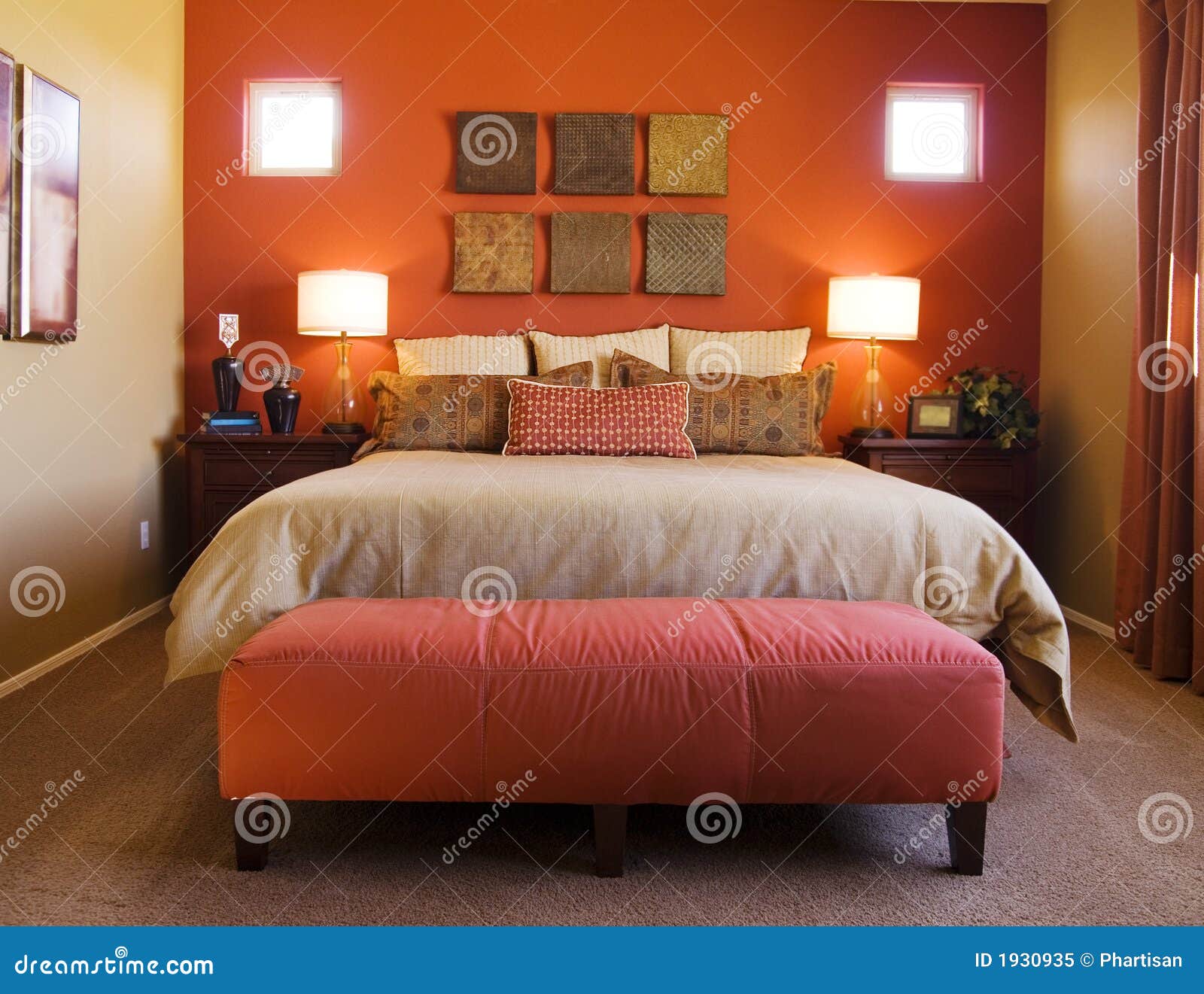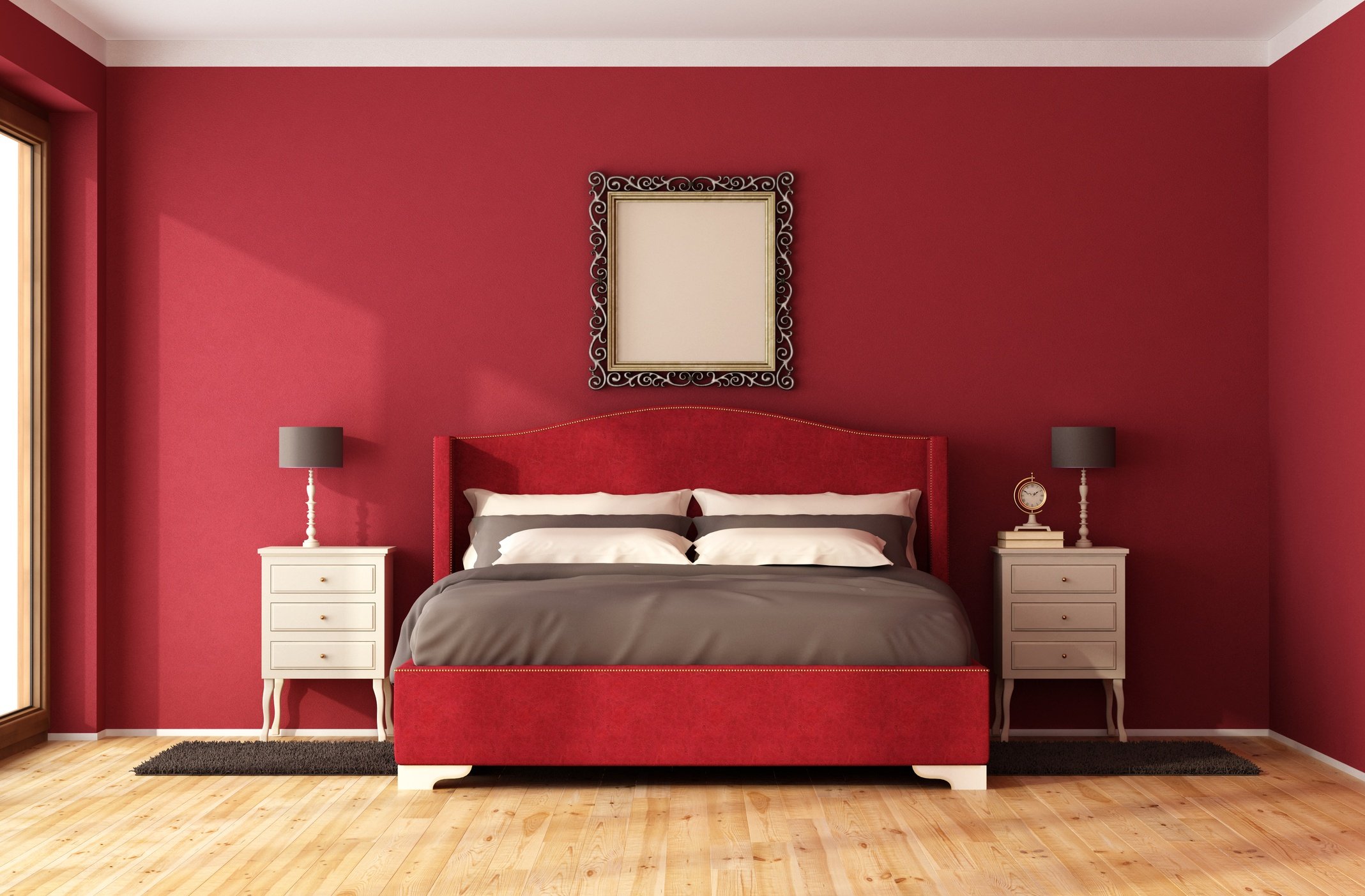The Psychology of Red in Bedroom Design

Red, a color associated with passion, energy, and excitement, can have a profound impact on the mood and atmosphere of a bedroom. While its use in bedroom design is often debated, understanding its psychological effects can help you determine if red is the right choice for your personal space.
The Psychological Effects of Red on Mood and Sleep
Red is a stimulating color that can evoke strong emotions. Studies have shown that exposure to red can increase heart rate, blood pressure, and respiration, leading to feelings of excitement and alertness. This makes it a less ideal choice for a bedroom where relaxation and sleep are prioritized.
“Red is a stimulating color that can evoke strong emotions. It can increase heart rate, blood pressure, and respiration, leading to feelings of excitement and alertness.”
While red can be energizing, it can also be associated with feelings of aggression and anger. Excessive exposure to red can lead to feelings of frustration and anxiety, making it crucial to consider the overall design and balance of the room.
The Use of Red in Bedrooms for Different Personalities and Lifestyles
The appropriateness of red in a bedroom depends largely on individual preferences and lifestyles.
- For individuals who thrive on energy and excitement, red can be a motivating and invigorating choice. A bold red accent wall or a few red accessories can add a touch of vibrancy and create a stimulating environment.
- For those seeking a calming and restful atmosphere, red is generally not recommended. Instead, consider using softer shades of red or incorporating red accents sparingly to avoid overwhelming the space.
- For couples, red can be a romantic and passionate choice, especially when used in moderation. A red headboard or a few red throw pillows can add a touch of intimacy and sensuality to the bedroom.
The Impact of Red on the Perception of Space and Intimacy
Red is a powerful color that can influence the perception of space and intimacy in a bedroom.
- Red can create a sense of warmth and closeness, making the room feel more intimate and inviting. This can be especially beneficial for smaller bedrooms where creating a cozy atmosphere is important.
- However, too much red can make a room feel cramped and claustrophobic. It’s important to use red strategically and balance it with other colors to create a sense of spaciousness and airiness.
Design Ideas for Red Bedrooms: Pictures Of Bedrooms Painted Red

Red is a powerful color that can evoke a wide range of emotions, from passion and energy to warmth and comfort. When used strategically in a bedroom, red can create a space that is both stimulating and relaxing. There are many ways to incorporate red into a bedroom design, and the key is to find a balance that suits your personal style and preferences.
Red Accent Walls
An accent wall is a great way to add a pop of color to a neutral bedroom. A red accent wall can create a focal point in the room and make it feel more dynamic. The red wall can be paired with white or cream furniture and bedding to create a clean and modern look. Alternatively, you can use darker furniture and bedding to create a more dramatic and sophisticated ambiance.
Red Furniture, Pictures of bedrooms painted red
Red furniture can add a touch of boldness and sophistication to any bedroom. A red headboard, a red armchair, or a red ottoman can all be great additions to a neutral or monochromatic bedroom. You can also use red furniture to create a statement in a room with a more vibrant color palette. For example, a red armchair can be placed in front of a teal wall to create a visually appealing contrast.
Red Bedding
Red bedding is a great way to add a pop of color to a neutral bedroom. You can choose from a variety of red bedding styles, from solid red sheets to patterned duvet covers. Red bedding can be paired with white or cream furniture and accents to create a clean and modern look. Alternatively, you can use darker furniture and accents to create a more dramatic and sophisticated ambiance.
Color Palettes for Red Bedrooms
The right color palette can make or break a red bedroom design. Here are a few color palettes that complement red and create a cohesive look:
- Red and White: This classic color combination is clean, crisp, and timeless. It creates a bold and sophisticated look. The white helps to balance out the intensity of the red and creates a sense of spaciousness.
- Red and Gray: This color combination is both modern and sophisticated. The gray helps to tone down the intensity of the red and creates a sense of calm.
- Red and Black: This color combination is dramatic and edgy. It creates a bold and powerful look. The black helps to create a sense of depth and contrast.
- Red and Green: This color combination is inspired by nature. The green helps to balance out the intensity of the red and creates a sense of tranquility.
- Red and Blue: This color combination is vibrant and energetic. It creates a bold and eye-catching look. The blue helps to create a sense of balance and harmony.
Incorporating Red into Different Bedroom Styles
Red can be incorporated into a variety of bedroom styles, from modern to minimalist to traditional. Here are a few examples:
- Modern: In a modern bedroom, red can be used as an accent color to add a touch of boldness and sophistication. For example, you could use a red accent wall, red bedding, or red furniture. The rest of the room should be kept clean and simple, with minimal clutter.
- Minimalist: In a minimalist bedroom, red can be used sparingly to create a sense of drama and intrigue. For example, you could use a red headboard, a red rug, or a red throw pillow. The rest of the room should be kept simple and uncluttered.
- Traditional: In a traditional bedroom, red can be used to add a touch of warmth and richness. For example, you could use red curtains, red bedding, or red furniture. The rest of the room should be decorated with traditional elements, such as antique furniture and floral patterns.
Practical Considerations for Red Bedrooms
While red is a vibrant and energetic color, it’s important to consider its potential impact on your sleep and overall mood before incorporating it into your bedroom design. Red is often associated with passion, energy, and excitement, which can be stimulating and make it challenging to relax and unwind. However, with careful planning and strategic design choices, you can create a red bedroom that is both visually stunning and conducive to restful sleep.
Managing the Intensity of Red
The intensity of red can be influenced by various factors, including the shade of red, the amount of natural light, and the use of artificial lighting. It is essential to manage the intensity of red in a bedroom to ensure a comfortable and relaxing atmosphere.
- Lighting: Using warm-toned lighting, such as incandescent bulbs or dimmable LED lights, can help soften the intensity of red. Avoid harsh fluorescent lights, which can amplify the vibrancy of the color.
- Window Treatments: Sheer curtains or blinds can help diffuse natural light and reduce the brightness of red during the day. Consider using heavier curtains or blackout blinds to block out light and create a more intimate and relaxing ambiance at night.
- Color Combinations: Pairing red with complementary colors like green or blue can create a balanced and harmonious effect. These colors can help neutralize the intensity of red and create a more calming atmosphere.
Choosing the Right Shade of Red
Selecting the appropriate shade of red for your bedroom is crucial for creating the desired ambiance. The right shade can make a significant difference in the overall feel and functionality of the space.
- Room Size: In smaller bedrooms, consider using lighter shades of red, such as coral or rose, to create a sense of spaciousness. Darker shades of red, such as burgundy or crimson, can make a small room feel even smaller.
- Light Conditions: In rooms with limited natural light, consider using warmer shades of red, such as brick red or terracotta, to create a cozy and inviting atmosphere. In rooms with ample natural light, you can use brighter shades of red, such as scarlet or cherry red, to add a touch of energy and vibrancy.
- Personal Preferences: Ultimately, the best shade of red for your bedroom is the one that you find most appealing and relaxing. Consider experimenting with different shades and tones until you find one that you love.
